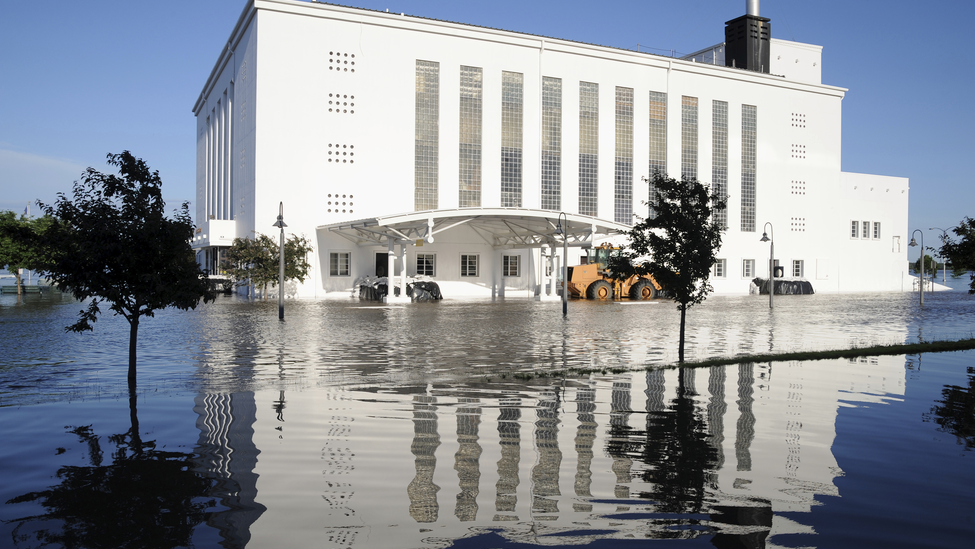Rain and Flooding


By taking action to prepare in advance for flooding, most businesses can save 20-90% on the cost of lost stock and moveable equipment, as well as a lot of trouble and stress. It is vital that organisations:
- Find out if they are at risk of flooding.
- Find out about flood warnings.
- Plan to protect property and minimise financial risks.
- Ensure the safety of all staff.
Responding to a flood warning can make a substantial difference to flood-related damages. There can be savings of up to 80% on stock and moveable equipment. Taking action in response to flooding can also help to minimise business interruption and the cost of getting back in business – factors which often outweigh the direct physical costs of flooding. You can help reduce the cost of flooding to your business by taking a few simple, low-cost or no-cost steps to minimise the effects of flood waters. More expensive actions can be taken to make bigger savings.
No-cost tips
- Find out if flood warnings are available in your area and, if so, put in place measures to ensure you will be sent or have access to the warnings.
- Monitor the weather forecast and rainfall radars to see if torrential rain is expected.
- Write a flood plan and keep a copy(ies) in a safe place and off-site. Train staff to be prepared for flooding.
- Be ready to move important equipment or stock, such as computers, above flood level upon receipt of a flood warning.
- Keep a store of strong plastic bags to place around the legs of furniture when you receive a flood warning.
- Identify a suitable location for evacuation of vehicles to higher ground.
- Consider the height at which goods are fixed, stored or displayed – the higher the goods the less chance of damage.
- Copy vital hard-copy and electronic records and store them in a safe place. This includes financial and insurance records, designs and specifications, staff, customer and supplier databases and staff files.
Low-cost tips
- Purchase a pump so that water can be removed as quickly as possible once waters have subsided.
- Install back-flow valves on all toilets and drains.
- Raise electrical sockets above flood level.
- Raise electrical machinery on a platform above the expected flood level.
- Buy sturdy plastic sheeting for use in case of a flood warning. Place large furniture on top of the sheeting and raise the sheeting around it.
- Move computer servers permanently away from the basement or ground floor.
- Secure equipment that could move or fall during a flood.
- Store stock on pallets or shelving.
- Move archive stores permanently away from the basement or ground floor.
Higher-cost tips
- Move air-conditioning and heating systems permanently away from the basement or ground floor.
- Purchase machinery with motors, gear boxes and programmable electric controls that are above flood level (i.e., at the top).
- Purchase an emergency power generator.
- Purchase permanent or semi-permanent flood protection products.
- Install drainage, a sump and sump pump in basements so that water is channelled to the sump and can then be pumped outside.



